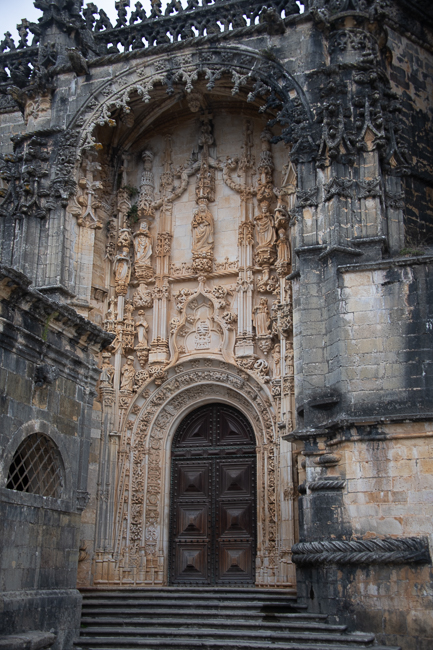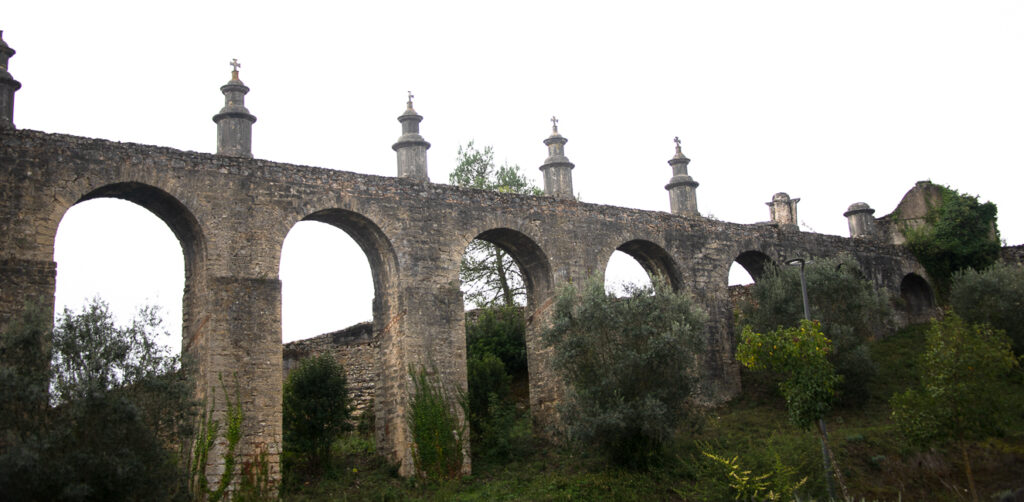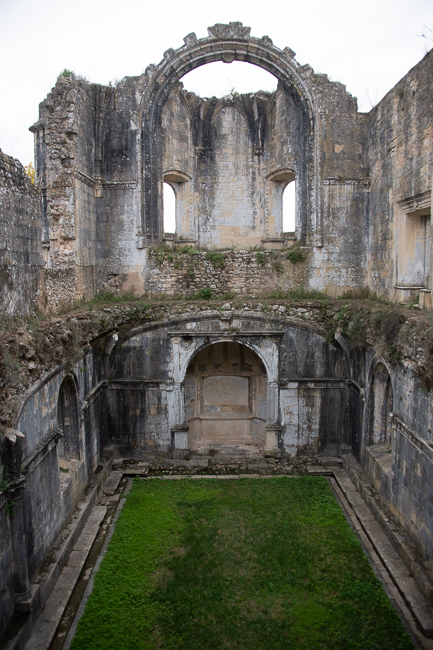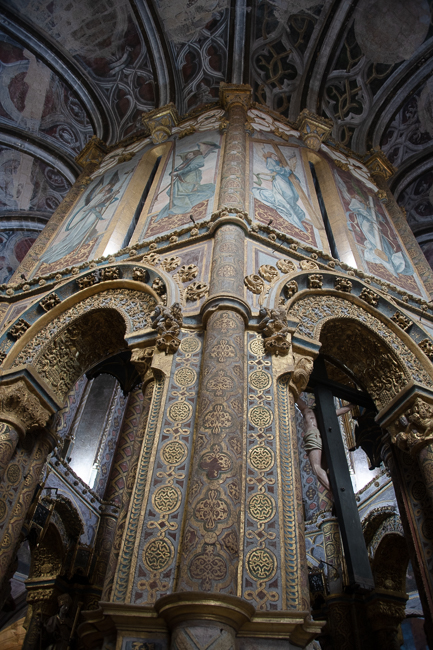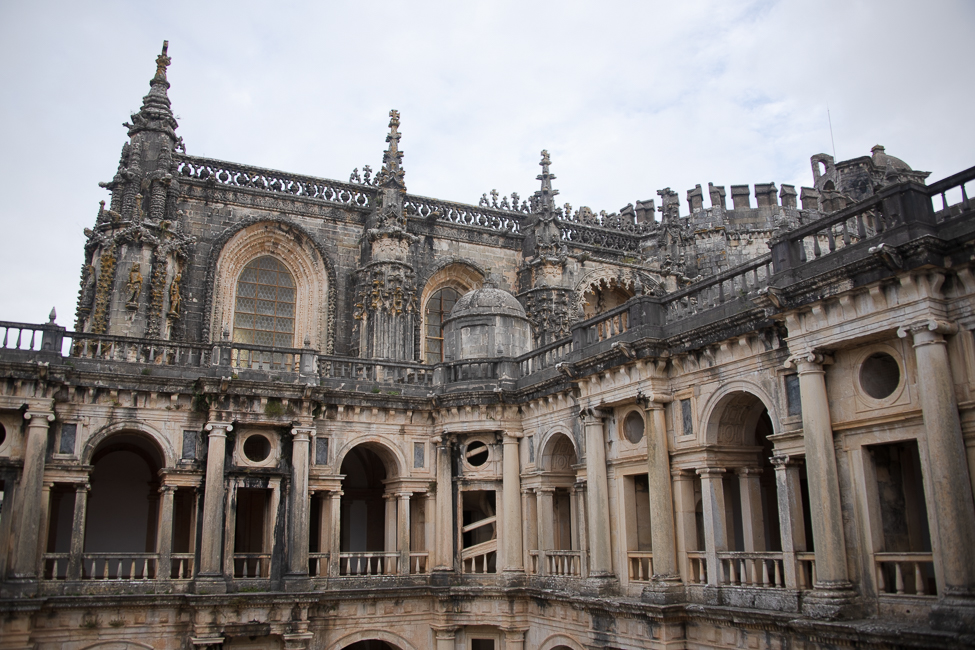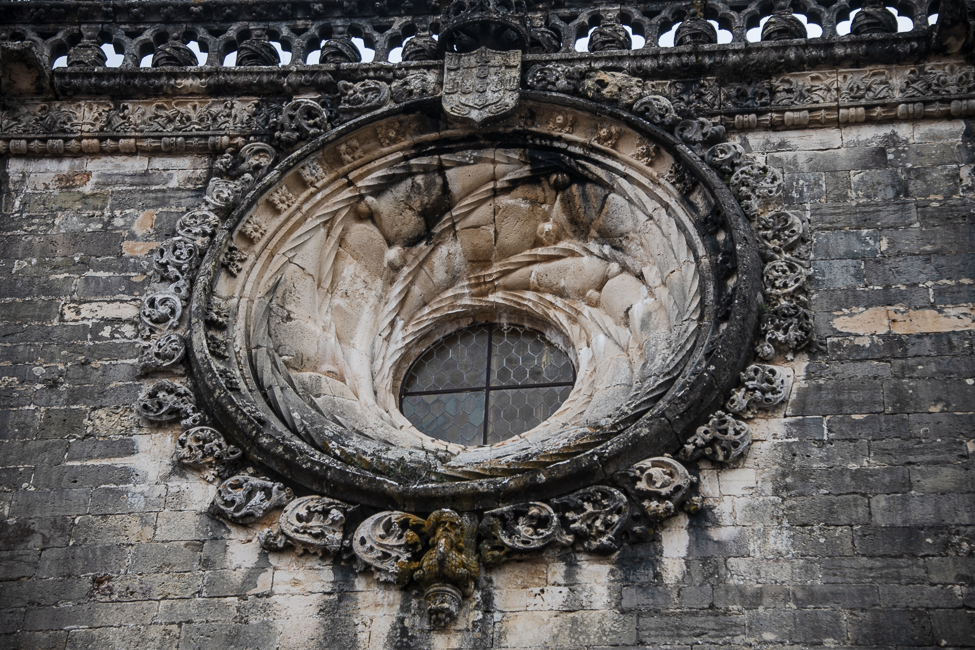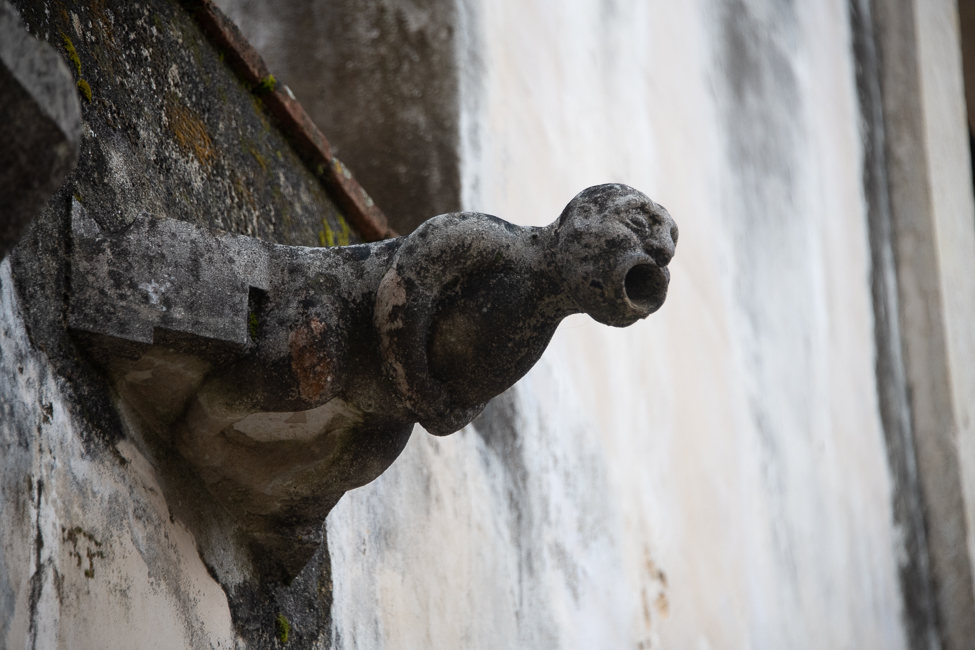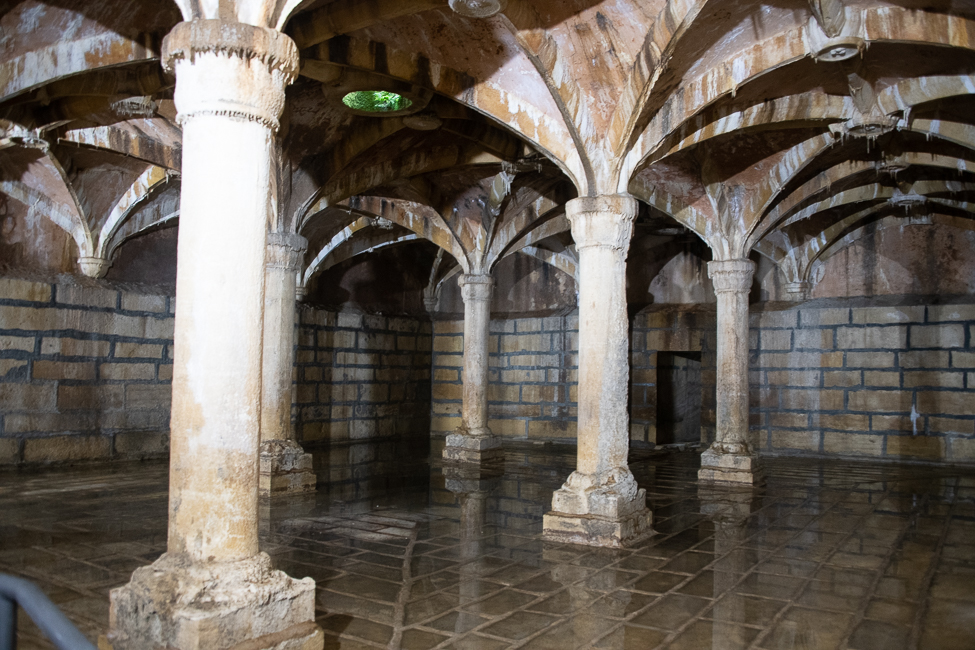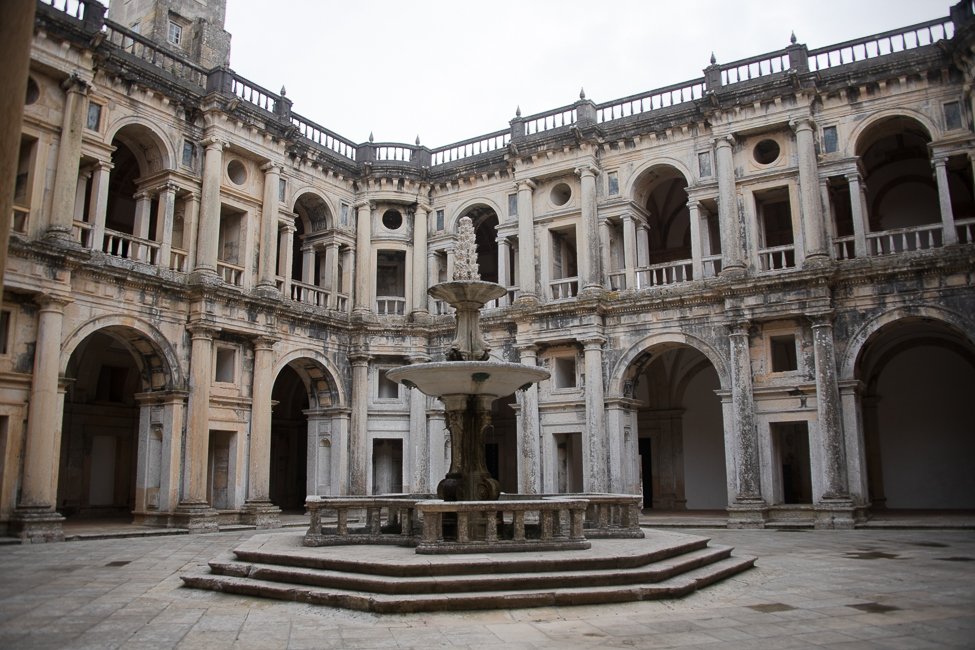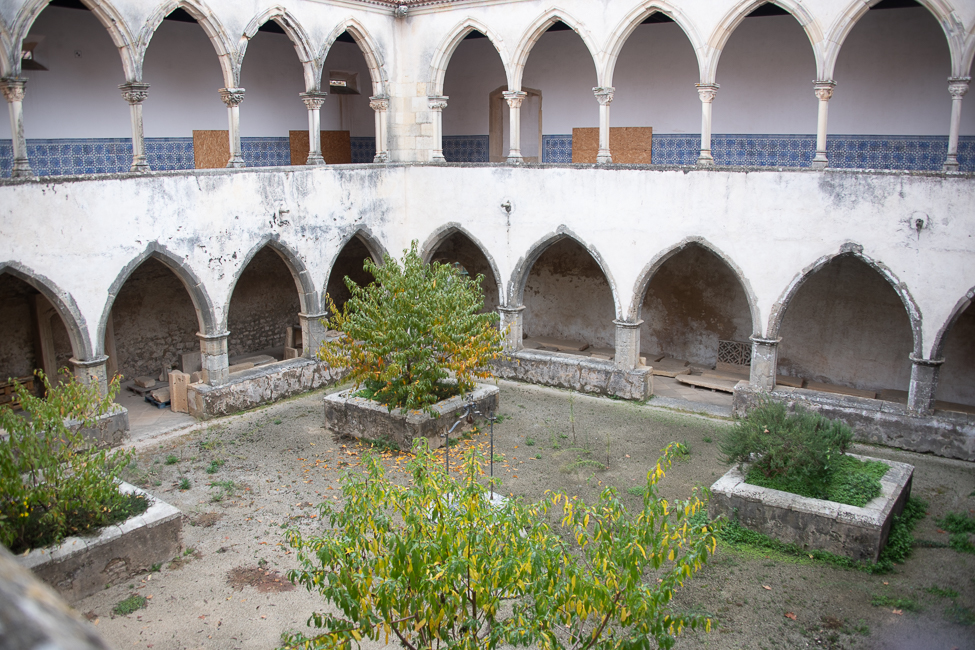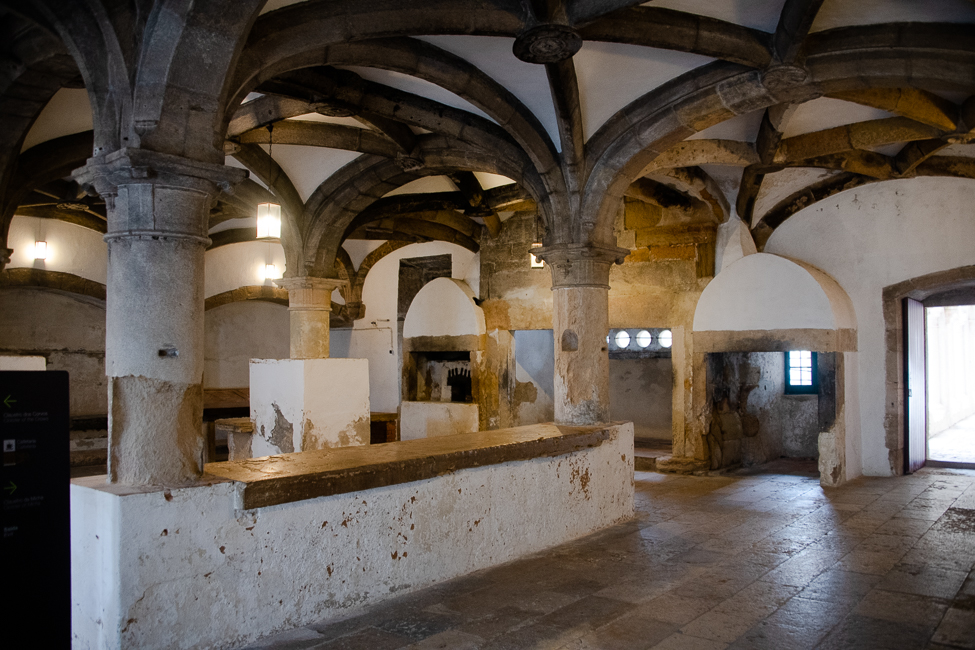November 2021
Convent of Christ
Tomar, Portugal
To put the Convent in simplistic terms it was originally a 12th-century Knights of the Templar stronghold, which people now call castle. The order was dissolved, and this is where it gets complicated. In the 1400s, the convent was turned over to the Knights of the Order of Christ.
The convent was founded by the Order of Poor Knights of the Temple (or Templar Knights) in 1118. Construction went on for years. Sometime around 1190 it was walled in so that it would resist the armies of caliph Abu Yusuf al-Mansur. The castle was an integral part of the defense system created by the Knights to secure the border of the new Christian Kingdom against the Moors.
The Knights Templar were the elite fighting force of their day. One of their religious tenants is that they were forbidden from retreating in battle, unless outnumbered three to one, and even then only by order of their commander, or if the Templar flag went down.
The Templars became bankers, and with that highly politically connected, and ingrained in society at a high level. That success attracted a lot of worried kings from various nations, and battles ensued on several fronts. The history is fascinating and worth pursuing, but not here.
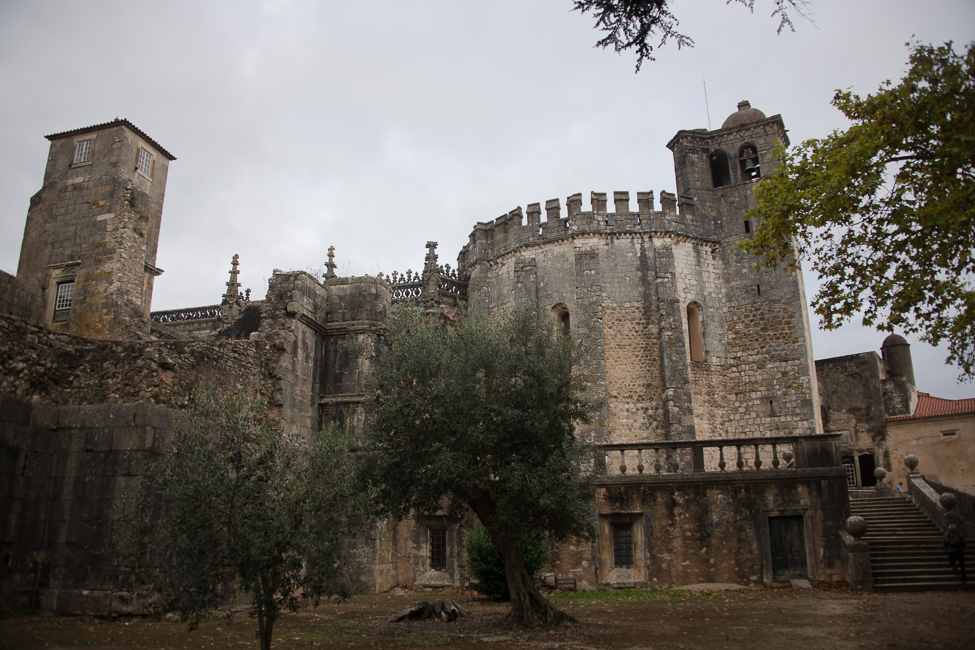 The Templar Order was dissolved in most of Europe but in Portugal King Denis had its members and assets transferred to The Order of Christ. The Order of Christ was created by Pope John XXII after a strong suggestion from King Denis. So in this case Convent means “Convent of the Knights”.
The Templar Order was dissolved in most of Europe but in Portugal King Denis had its members and assets transferred to The Order of Christ. The Order of Christ was created by Pope John XXII after a strong suggestion from King Denis. So in this case Convent means “Convent of the Knights”.
The castle and Convent of Christ have examples of Romanesque, Gothic, Manueline and Renaissance architectural styles, simply because they kept adding onto it through history.
1417–1450 there was construction of the Cemetery Cloister and the Washing Cloister. In 1484 there was the construction of a sacristy and in 1499 the chapter house, the main alter and the choir were expanded.
In 1503 the King expropriated the old Vila de Dentro and enclosed it within the walls.
In 1557 King John III demilitarized the order, and ordered the construction of a new Renaissance cloister.
The buildings history does not end there, but much of its construction does.
Round churches were a hallmark of Templar architecture. This church inside of the structure is breathtaking. It is highly ornamented with Gothic painting and sculpture.
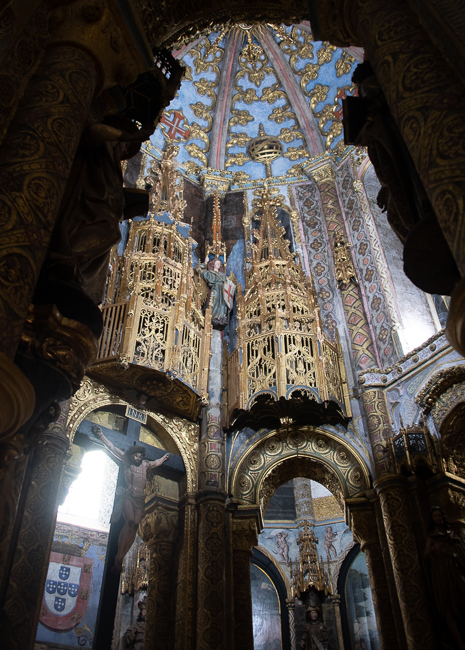 *
*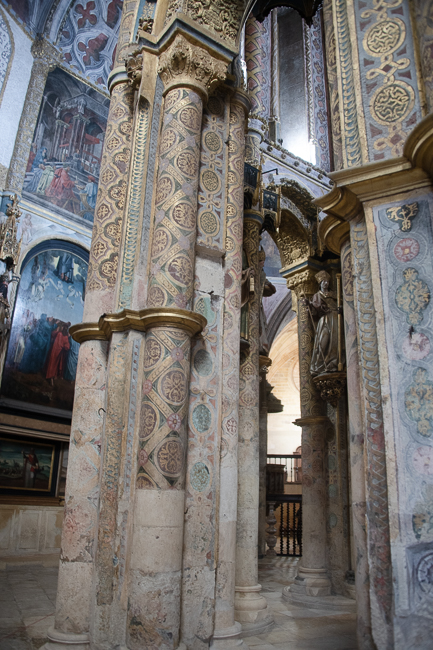
*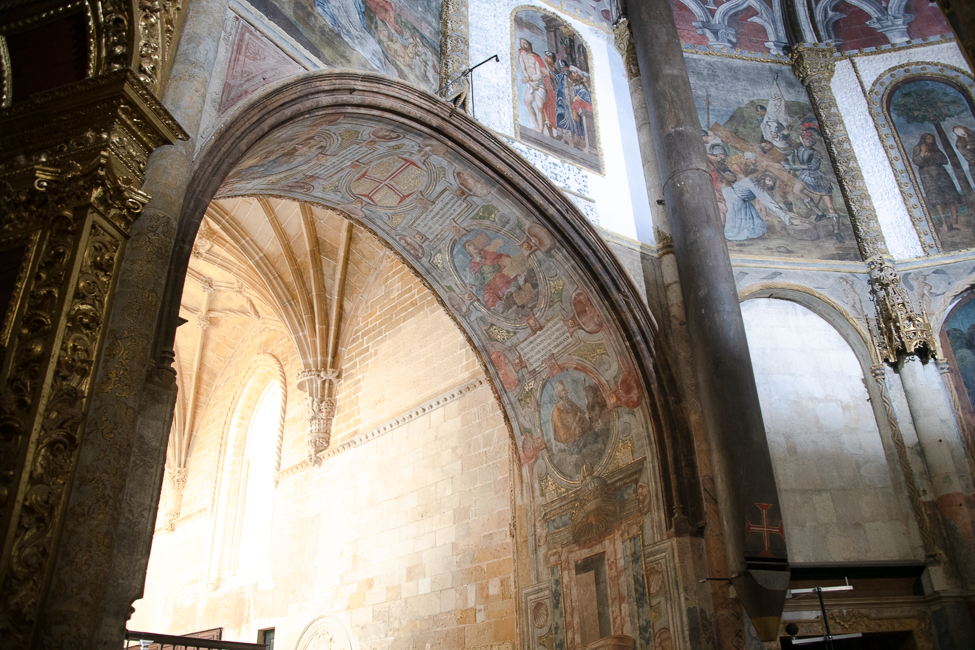 *
*

One of the highlights of the Convent of Christ is the famous Chapter House Window in Manueline Style by Diogo de Arruda in 1510–1513.
There are 8 cloisters in all in the Convent of Christ
